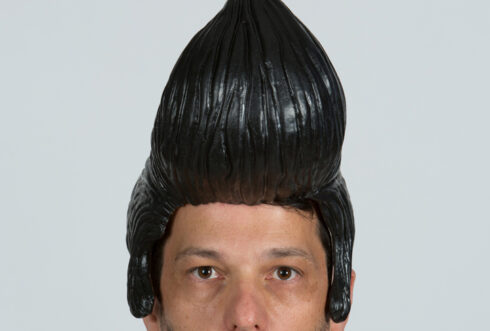My Kingdom for a Stage
November 6-28, 2015
My Kingdom for a Stage: Contemporary Iberian Staged Photography
Curated by Susana Raab
Photography is often equated to an indelible truth, but since its infancy the medium has been as much about promoting fantasy as reality. Staged photography has been employed since photography’s inception – in capturing the tableaux vivants of upper class Victorians the camera was used to record recreated historic and fictive events. Contemporary practices in documentary and staged photography employ a variety of approaches to the act of staging, which grants the creator full control of his or her narrative. The works created in this show illuminate this spectrum of staged photographic practice: from documentary to the purely conceptual, the performance is in the work. All are united in an Iberian identity, whether through the use of symbols, magical realism and whimsy, or the cultural forces that inform the Iberioamerican diaspora.
Conceptually, the work often follows the tradition of magical realism in recreating fantasy worlds meant to inform our current realities as in Mexican artist Dulce Pinzón’s “Global Warming,” or in Colombian artist Adriana Duque “Maria 2.” The latter image, recreates a world of childhood fantasy where a young Infanta sojourns resplendent and bejeweled, a modern interpretation of a baroque Colonial fantasy. Other conceptual works employ humor and wit as in the anthropomorphized objects of García de Marina “Untitled”, Irina Werning’s “Back to the Future” series, or Brazil’s “Mostra Tua Capa”, which takes 1970s Brazilian album covers and resets them in contemporary circumstances. Other photographers in the show pursuing the conceptual include Roberto Fernandez, Mario Santizo, Felipe Dulzaides, Eloy Mora, Rodrigo Valenzuela, Fausto Ortíz, and Hector Rene.
Documentary photography is considered to be the sacred terrain of the unaltered photograph, but it can employ elements of staged photography to powerful effect. Consider Salvadorian photojournalist Fred Ramos’ “The Last Outfit of the Missing,” which recreates a literal ghost from clothing recovered from exhumed graves. The empty outfits become the last representation of the missing, and one of the only ways to positively identify the deceased. Looking inwards, Ecuadorean photographer Paola Paredes, set a stage composed of three cameras recording the moment when she told her parents she was gay. The photographic series records pain, pathos, and humor. Both works restage or stage actual moments to powerful effect. Artists Norberto Duarte, Rafael Soldi, Miguel Proença, and Francisco Elías Prada also play within the parameters of the documentary photograph.
Contemporary and cultural concerns are revealed in these artists’ works as they explore their own emigrations, dying cultural customs, environmentalism, religious iconography, and other topics analogous to the Iberian identity. The borders of the original kingdom have become fluid and the stage has expanded to occupy a multiplicity of voices springing from one original platform.
This exhibition was made possible by the Ibero-American Cultural Attaches Association, a Washington, DC, based 501 (C) 3 organization that seeks to contribute in the dissemination and preservation of Ibero-American heritage and culture, past and present, to the public in the DC area.
Artists represented in the exhibit:
Argentina/Irina Werning
Brasil/Mostra Tua Capa
Chile/Rodrigo Valenzuela
Colombia/Adriana Duque
Costa Rica/Eloy Mora
Ecuador/Paola Paredes
El Salvador/Fred Ramos
España/García de Marina
Guatemala/Mario Santizo
Honduras/Hector Rene
Mexico/Dulce Pinzón
Paraguay/Norberto Duarte
Peru/Rafael Soldi
Portugal/Miguel Proença
Uruguay/Roberto Fernandez
República Dominicana/Fausto Ortiz
Venezuela/ Francisco Elías Prada
About the Curator:
Susana Raab is a documentary photographer and curator based out of Washington, DC. She works at the Smithsonian’s Anacostia Community Museum as a photographer in addition to pursuing her own personal projects. Her work has been exhibited internationally and is held in the collections of the Library of Congress, the Art Museum of the Americas, the Smithsonian National Museum of American History, among others. She was born in Lima, Peru and raised throughout the United States.























